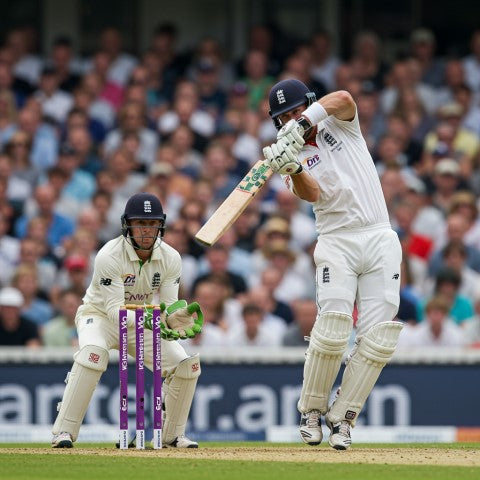Should Test Cricket Be Cut to Four Days?

Test cricket is often described as the pinnacle of the sport. With its origins tracing back to the 19th century, it remains the oldest and most revered format. Spanning up to five days, Test cricket challenges the endurance, skill, and temperament of players unlike any other version of the game. Yet, in an age of fast-paced entertainment and shrinking attention spans, the format’s duration has increasingly come under scrutiny.
Calls to reduce Test matches from five days to four have grown louder in recent years, with support from some administrators and broadcasters, and strong resistance from traditionalists and players. But would such a change enhance the game or dilute its essence?
This article explores both sides of the debate, examining the arguments for and against cutting Test cricket to four days, and considers what the future may hold for the sport’s most enduring format.
A Brief History of the Five-Day Format
Test cricket has traditionally been played over five days, with each team allotted two innings. This duration was not arbitrarily chosen; it evolved through decades of experimentation. In its early years, Tests had no time limits, with some matches stretching over six or even seven days (with rest days included). Eventually, five days became the standard, striking a balance between competitive gameplay and a reasonable timeframe.
Over time, the five-day structure has produced legendary contests—Ashes thrillers, India’s historic overseas wins, dramatic comebacks, and hard-fought draws that felt like victories. The format is seen as a true test of character, where weather, pitch deterioration, player fatigue, and psychological pressure all play a role.
However, the cricketing calendar has changed. T20 leagues, ODIs, and franchise commitments now compete for attention and airtime. With player burnout and scheduling pressures on the rise, the question of reducing Tests to four days has re-entered the spotlight.
Arguments in Favour of Four-Day Tests
1. Time Efficiency and Scheduling Relief
One of the strongest arguments for shortening Tests is the potential to ease congested international calendars. The modern game is saturated with cricket—international tours, domestic first-class fixtures, T20 leagues, ICC events, and bilateral series all jostle for space. Trimming a day off Tests could create room for other formats, reduce player fatigue, and provide more rest between games.
Boards could schedule more matches with fewer travel demands, enabling greater global coverage and a more flexible fixture list. For broadcasters and venues, shorter Tests mean lower operational costs—fewer days of staffing, security, hospitality, and logistical expenses.
2. Appealing to Modern Audiences
Cricket is in direct competition with other sports and digital entertainment. Younger viewers, particularly in regions like South Asia, increasingly prefer shorter formats like T20 and The Hundred. A four-day Test may be seen as more accessible, offering a better balance between traditional cricket and modern attention spans.
If marketed correctly, four-day Tests could draw casual fans who might otherwise ignore the longer format entirely. More competitive finishes in a condensed timeframe could add excitement and increase viewership.
3. Existing Precedents
Four-day first-class matches are already the norm in most domestic systems, including England’s County Championship. The 2019 Test between England and Ireland at Lord’s was also played over four days, and some ICC members have experimented with the format.
While results vary, the use of four-day fixtures in recognised cricket gives supporters of the change evidence that the model can work—especially when scheduled against weaker opposition or in less competitive bilateral series.
4. Encouraging More Results
Proponents argue that reducing the time available would force teams to play more positively. Rather than dragging games toward slow-moving draws, captains may be incentivised to declare early, set bolder targets, and chase victories with greater intent. Fewer drawn games, they argue, would mean more drama and better viewing.
Arguments Against Four-Day Tests
1. Diluting the Format’s Integrity
Five-day Tests are revered not simply because of tradition but because they are designed to test every aspect of a cricketer’s skill. Cutting a day reduces the time available for strategic battles to unfold, and some believe this compromises the essence of Test cricket.
Endurance, mental resilience, and patience are integral to the format. Iconic innings—like Hanif Mohammad’s 970-minute marathon or Ben Stokes’ heroics at Headingley—unfolded because the format allowed it. A four-day limit could rob cricket of such epic stories.
2. Risk of More Draws, Not Fewer
Despite suggestions to the contrary, reducing the number of days may actually increase the number of draws—especially on flat pitches or in rain-affected games. Even now, some Tests go down to the wire on day five. Removing that day could turn thrilling finishes into anticlimactic stalemates.
Longer fourth-innings chases or final-day resistance efforts—some of the most memorable elements of Test cricket—could become rare or disappear entirely. Furthermore, the current five-day format already has a healthy result rate, with more than 70% of Tests in recent years producing a winner.
3. Impact on Pitch Preparation
Groundsmen and curators design pitches with the five-day format in mind, often aiming for gradual deterioration that brings spinners into play. Reducing the match by a day would likely change pitch behaviour, possibly skewing conditions in favour of fast bowlers or the team winning the toss.
The delicate balance between bat and ball—a hallmark of good Test matches—could be compromised, especially in subcontinental conditions where spinners rely on fifth-day wear and tear.
4. Player Sentiment and Resistance
Many current and former players have spoken out against the idea of four-day Tests. From Virat Kohli to Ben Stokes, cricketers argue that the five-day format is the gold standard of the sport and should not be tampered with for commercial reasons.
Players fear that a shorter format might eventually become the new norm, encouraging boards to schedule only four-day matches to save costs. Over time, this could erode the stature of Test cricket altogether.
The Role of the ICC and Cricket Boards
The International Cricket Council (ICC) has considered the idea of making four-day Tests official, particularly for lower-ranked teams or as part of a broader Test Championship structure. Some boards, like Cricket South Africa, have expressed openness to the idea, especially when it comes to cost-saving.
However, the proposal has been met with stiff resistance from traditional cricketing powers. The England and Wales Cricket Board, Cricket Australia, and the Board of Control for Cricket in India have so far remained committed to the five-day format—at least for marquee series such as the Ashes or India v Pakistan (should it ever resume).
Smaller nations, however, may see merit in shorter Tests that are cheaper to host and easier to attract sponsors for. But without consensus across the ICC and the top-tier boards, any significant shift remains unlikely in the near term.
Should All Tests Be Treated Equally?
One possible middle ground is contextual flexibility—allowing four-day Tests in lower-profile series or between lower-ranked teams, while keeping five days for top-tier fixtures. For example, a New Zealand v Zimbabwe Test could be scheduled over four days, whereas an Ashes clash or an India v England Test would remain five days.
Supporters argue that this would allow the format to adapt without losing its highest level of challenge and prestige. Detractors claim this approach creates a two-tier system that further marginalises smaller nations.
The idea of day-night Tests was once controversial too, yet has found a place in the calendar. Could four-day Tests follow a similar trajectory—used sparingly, and with specific guidelines?
The Commercial Angle
There’s no denying the influence of money in modern cricket. Boards want profitable fixtures, broadcasters want engaging content, and sponsors want eyes on their logos. In this environment, five-day cricket is seen by some as inefficient—a relic that needs updating.
From a financial perspective, a four-day Test reduces costs while opening up new opportunities for short-format matches or T20 franchise windows. Venues could host back-to-back Tests or more tour matches, while maintaining revenue.
However, critics argue that commercial logic cannot dictate sporting merit. Test cricket’s value lies not in its profitability, but in the prestige it brings to the game. Reducing its time frame to chase television ratings may deliver short-term gains but harm the long-term future of cricket’s most respected format.
What Do the Fans Think?
The cricketing public remains divided. Some fans, especially in T20-centric countries, are open to innovation and would welcome a tighter, punchier version of Test cricket. Others, particularly purists, view any change as a threat to the soul of the game.
Surveys and polls have shown mixed results. In some, up to 60% of fans oppose shortening Tests. In others, especially among younger demographics, the idea finds favour as a means of revitalising interest in the format.
Ultimately, fan engagement will play a major role in shaping the format’s future. If stadiums remain empty on day five and ratings fall flat, boards may be tempted to trial change. But if fans continue to turn out for thrilling fifth-day finishes, the five-day format will retain its power.
Final Thoughts: Should Test Cricket Be Cut to 4 Days?
The debate over four-day Tests is far from settled. On one side is the argument for modernisation—efficiency, excitement, and engagement. On the other is the case for preservation—integrity, endurance, and legacy.
Test cricket has always stood apart for its complexity and depth. It is slow, deliberate, and strategic—qualities that seem out of sync with today’s fast-moving world. Yet precisely because of these qualities, Test cricket commands reverence and respect.
Shortening Tests may produce some short-term gains, but it risks stripping the format of the very elements that make it special. If anything, the solution lies not in reducing time but in enhancing context—more meaningful fixtures, better scheduling, and consistent global investment in Test infrastructure.
Should Test cricket be cut to four days? For now, the answer must be no. Not until the format has been given every chance to thrive in its full form. The fifth day isn’t just extra time—it’s the final act in a dramatic play. Remove it, and we may find the story no longer ends the way it should.





Leave a comment